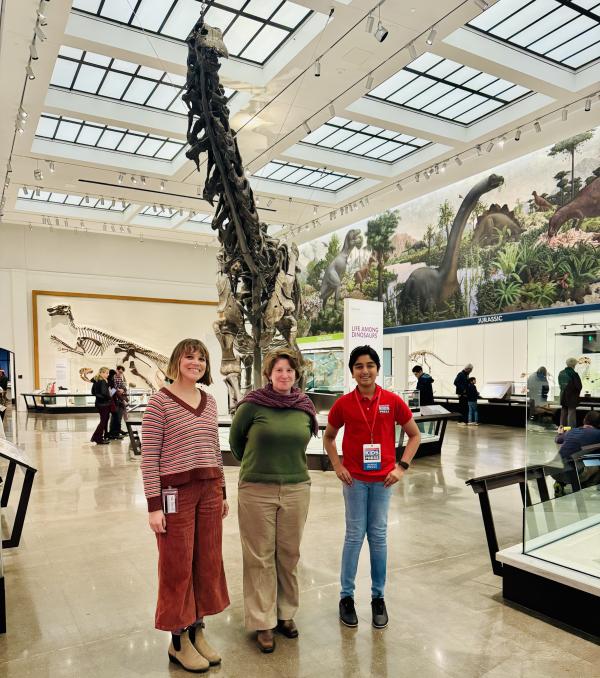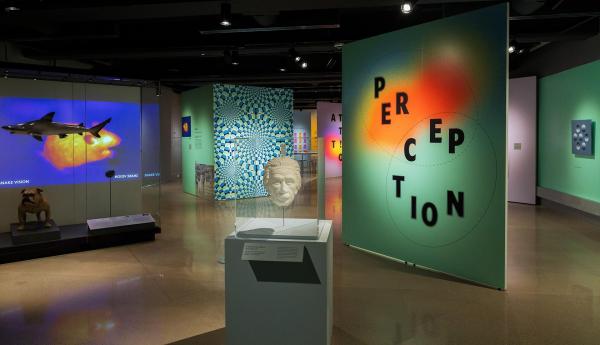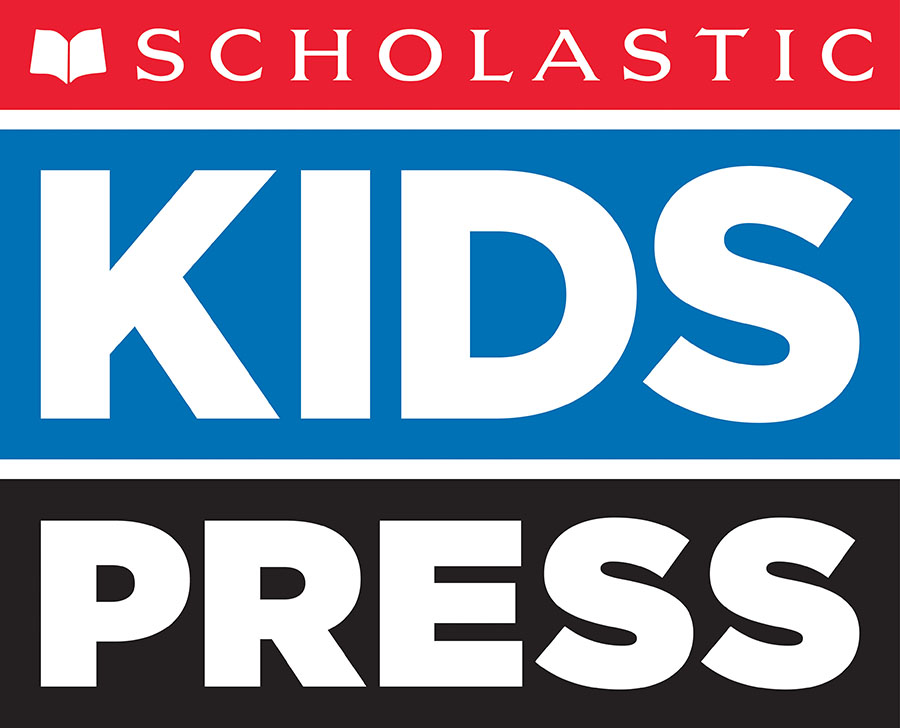KID REPORTERS’ NOTEBOOK
Preserving the Past and Inspiring the Future: Exploring the Newly Transformed Yale Peabody Museum


Scholastic Kid Reporter Arjun Atluri (far right) standing alonside Ms. Natalie Mastick (left) and Ms. Susan Butts (center) in the newly refurbished Yale Peabody Museum
Last March, the Peabody Museum of Natural History at Yale University, one of the oldest and largest natural history museums in the world, reopened its doors after its first-ever comprehensive renovation in 90 years. Funded by businessman, philanthropist, and Yale alumnus, Edward P. Bass, the $160M donation was the largest ever made to a natural history museum in the United States.
Today, the museum houses 14 million specimens and objects showcasing the history and evolution of life on Earth and other significant collections, including the 110-foot mural "Age of Reptiles," the "Burke Hall of Dinosaurs," which houses the largest Brontosaurus fossil, as well as the brand new exhibition, "Mind/Matter: The Neuroscience of Perception, Attention, and Memory," created in partnership with the Wu Tsai Institute at Yale University.

A look at Yale Peabody's newest exhibition "Mind/Matter: The Neuroscience of Perception, Attention, and Memory. Photo courtesy of Peabody Museum webiste
During a recent visit, I interviewed Susan Butts, Director of Collections and Research, and Natalie Mastick, Postdoctoral Associate, Student Programs, at the Yale Peabody Museum about the renovation, reopening, and some of the museum's latest exhibitions. Here are some highlights from our conversation, edited for length and clarity:
Can you talk about some of the changes made during the renovation and how they’ve enhanced the visitor experience?
SB: One of the changes made to the Museum was the addition of the Central Gallery, an area created for temporary exhibitions related to ongoing research at Yale, to create circular paths through the galleries for seamless flow of visitors.
Also to give an enhanced experience to school groups in the museum, we created classrooms on each floor so that students can come and have a quick class before they get let loose in the museum.
NM: We also have a new imaging and recording studio that students can use, which has a ton of cool cameras and video recording setups and a podcast recording? station. So, we are really going to get students in here and use the space in different ways.
What challenges did the museum face during the renovation process, and how were they addressed?
SB: We had to close during Covid, which made things quite tricky. One big thing is that the Age of Reptiles mural is a fresco which means it’s painted on plaster, and it is part of the wall, and we had to do this full renovation underneath this giant priceless artwork. That was probably the biggest challenge.
How has the museum made new advancements to appeal to audiences?
NM: We have adapted some other ways of engaging audiences in virtual settings with touchscreens in most of the galleries that lead visitors through different activities. We also partnered with an app that has additional museum content like videos, trivia questions and fun facts so that we can engage visitors on a different level. We haven’t explored virtual reality yet.
SB: We have someone in our computer systems department now working on augmented reality where you could put all the meat, bones and fur back onto the skeleton of a mammoth, to make it look real.
How does the museum plan to utilize its expanded exhibition space and new classrooms?
NM: We have a lot of Yaleclasses coming and have their meetings here in the museum involving the collections. All the objects in the museum are more accessible to them.
We have dedicated an entire floor for K-12 school groups, where Yale graduate students, who are aspiring scientists, teach K-12 programming. These graduate students are also developing workshops based on their own research, allowing students from elementary to high school to gain a better understanding of science.
Can you tell us about any new and upcoming exhibits?
SB: We have a new exhibit about neuroscience, “Mind /Matter”, which features historic drawings of neurons in the human brain by Nobel Peace prize winner and a series of visual illusions and interactive exhibits.
NM: We also have a student exhibition space. It is a rotating exhibit that is curated by students and right now it is called “Fakes and Fictions.” The following will be an exhibit of photographs from a photography class called “Picturing Peabody.”.
Is there anything else about the museum you’d like to share with our readers?
SB: The Living Lab! Here you’ll find live plants and animals, activities to try, and some of the most intriguing objects and specimens from Peabody’s collections. We have scientists coming from around the world, from departments of paleontology, botany, and ornithology, to look at these materials to get a better understanding of life and the history of the Earth. Visitors can observe these scientists at work and engage with the ongoing research. It's an interactive experience that fosters curiosity and a deeper appreciation for the natural world.
